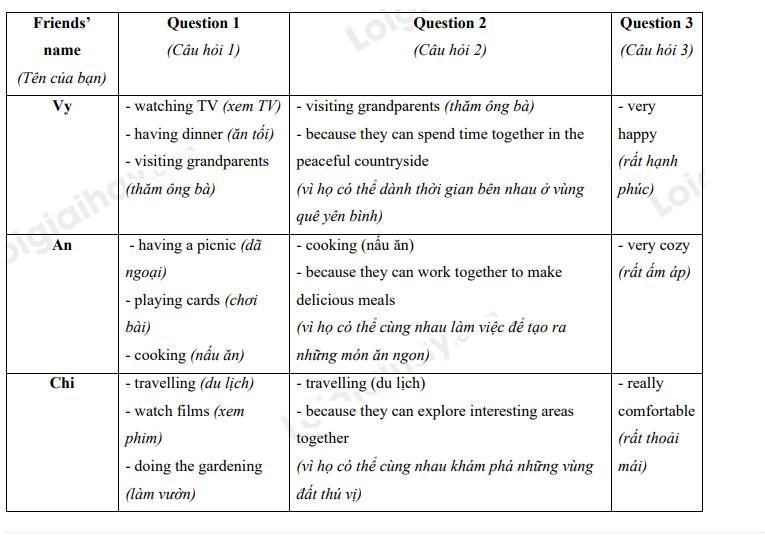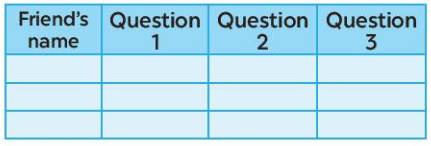
Hãy nhập câu hỏi của bạn vào đây, nếu là tài khoản VIP, bạn sẽ được ưu tiên trả lời.


My favorite leisure activity is reading. I try to read as often as I can, usually a few times a week. I usually read alone, but occasionally I join book clubs or discuss books with friends. I love reading because it allows me to escape into different worlds and explore new ideas. It broadens my perspective and helps me relax and unwind. The act of reading itself is a calming and immersive experience that brings me joy and fulfillment.

1.
Water is uniquely vulnerable to pollution. Known as a “universal solvent,” water is able to dissolve more substances than any other liquid on earth. It’s the reason we have Kool-Aid and brilliant blue waterfalls. It’s also why water is so easily polluted. Toxic substances from farms, towns, and factories readily dissolve into and mix with it, causing water pollution.
Categories of Water PollutionGroundwater
When rain falls and seeps deep into the earth, filling the cracks, crevices, and porous spaces of an aquifer (basically an underground storehouse of water), it becomes groundwater—one of our least visible but most important natural resources. Nearly 40 percent of Americans rely on groundwater, pumped to the earth’s surface, for drinking water. For some folks in rural areas, it’s their only freshwater source. Groundwater gets polluted when contaminants—from pesticides and fertilizers to waste leached from landfills and septic systems—make their way into an aquifer, rendering it unsafe for human use. Ridding groundwater of contaminants can be difficult to impossible, as well as costly. Once polluted, an aquifer may be unusable for decades, or even thousands of years. Groundwater can also spread contamination far from the original polluting source as it seeps into streams, lakes, and oceans.
Surface water
Covering about 70 percent of the earth, surface water is what fills our oceans, lakes, rivers, and all those other blue bits on the world map. Surface water from freshwater sources (that is, from sources other than the ocean) accounts for more than 60 percentof the water delivered to American homes. But a significant pool of that water is in peril. According to the most recent surveys on national water quality from the U.S. Environmental Protection Agency, nearly half of our rivers and streams and more than one-third of our lakes are polluted and unfit for swimming, fishing, and drinking. Nutrient pollution, which includes nitrates and phosphates, is the leading type of contamination in these freshwater sources. While plants and animals need these nutrients to grow, they have become a major pollutant due to farm waste and fertilizer runoff. Municipal and industrial waste discharges contribute their fair share of toxins as well. There’s also all the random junk that industry and individuals dump directly into waterways.
 Don't let the Trump administration pollute our drinking water
TAKE ACTION
Don't let the Trump administration pollute our drinking water
TAKE ACTION
Ocean water
Eighty percent of ocean pollution (also called marine pollution) originates on land—whether along the coast or far inland. Contaminants such as chemicals, nutrients, and heavy metals are carried from farms, factories, and cities by streams and rivers into our bays and estuaries; from there they travel out to sea. Meanwhile, marine debris—particularly plastic—is blown in by the wind or washed in via storm drains and sewers. Our seas are also sometimes spoiled by oil spills and leaks—big and small—and are consistently soaking up carbon pollution from the air. The ocean absorbs as much as a quarter of man-made carbon emissions.
Point source
When contamination originates from a single source, it’s called point source pollution. Examples include wastewater (also called effluent) discharged legally or illegally by a manufacturer, oil refinery, or wastewater treatment facility, as well as contamination from leaking septic systems, chemical and oil spills, and illegal dumping. The EPA regulates point source pollution by establishing limits on what can be discharged by a facility directly into a body of water. While point source pollution originates from a specific place, it can affect miles of waterways and ocean.
Nonpoint source
Nonpoint source pollution is contamination derived from diffuse sources. These may include agricultural or stormwater runoff or debris blown into waterways from land. Nonpoint source pollution is the leading cause of water pollution in U.S. waters, but it’s difficult to regulate, since there’s no single, identifiable culprit.
Transboundary
It goes without saying that water pollution can’t be contained by a line on a map. Transboundary pollution is the result of contaminated water from one country spilling into the waters of another. Contamination can result from a disaster—like an oil spill—or the slow, downriver creep of industrial, agricultural, or municipal discharge.

Cho tôi hỏi đây là chủ đề gì trong sách tiếng anh chương trình lớp 8? Nếu đây liên quan đến nội dung chương trình thì tôi trả lời còn bạn đăng về game cho vui thì tôi không giải nhé.
oh xin lỗi vì mình làm về chủ đề game, mình sẽ khắc phục lần sau không đăng nữa vì lúc đó mình cần á nên mình đăng chứ mình không đăng cho vui đâu, nếu có sai luật thì bạn không giải cũng được . ( unit 1 - leisure activities )

Exercise 4:
1.
A: What leisure activities do you usually do with your family?
(Những hoạt động rảnh rỗi nào bạn thường làm với gia đình.?)
B: I usually play badminton with my family at the weekends. We also go to a nearby beach to relax.
(Mình thường chơi cầu lông với gia đình vào cuối tuần. Chúng tôi cũng đi đến một bãi biển gần đó để thư giãn.)
2.
A: Which one do you like the most? Why?
(Cái nào mà bạn thích nhất? Tại sao?)
B: I like going to the beach the most. Because it helps me relax and it reduces stress.
(Mình thích đi ra biển nhất. Vì nó giúp mình thư giãn và nó giảm stress.)
3.
A: How do you feel when you spend time with your family members?
(Bạn cảm thấy như thế nào khi dành thời gian với gia đình?)
B: I feel very happy when I spend time with my family members.
(Mình thấy vui khi dành thời gian với gia đình.)

Exercise 5:
After discussing with members in our group, we see that riding bike is the most popular activity in our group. Furthemore, almost members in our group are into doing the crosswords, too.)
(Sau khi thảo luận với các thành viên trong nhóm, tụi mình nhận thấy rằng đạp xe là hoạt động phổ biến nhất. Thêm vào đó, hầu hết các thành viên cũng đều thích giải ô chữ.)

1. I would like visit english-speaking country most is America
2. My favorite thing in America: Here people are very friendly and there are many beautiful scenes here
3. If I have a chance to visit England, I will visit the Big Pen watch. I will take a lot of photos and eat the specialties here
4. Yes. Because if we learn in a good environment, we will be better and develop better
5. Some common disasters in vietnam are floods, storms, droughts, forest fires,
6. Storms often occur in my country when there is heavy rain and the tide is unusually high
7. Some causes of natural disasters are: Human consciousness, natural changes, emissions from large greenhouses,
8. We have to build solid houses, protect the environment, plant trees,
9. We can donate clothes, books, money. Rebuild homes for flood victims,

I like the custom of giving lucky money on New Year's Day because there will be a small amount of money to buy gifts and cakes
Trang phục gì mà bạn thích nhất ? tại sao ?